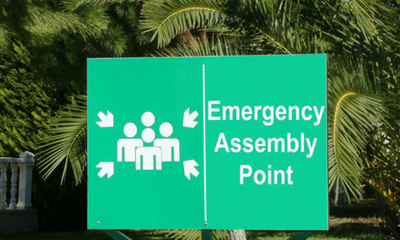The Future of Disaster Response: Dogs, Drones and Robots
The Future of Disaster Response: Dogs, Drones and Robots
The future of disaster response may soon resemble a sci-fi movie. Drones/Unmanned Aerial Vehicles (UAVs), robotics, innovative sensory machinery and other emerging technologies have had an extraordinary impact on the way communities and officials prepare and recover from a disaster.
Following a disaster, officials seek to: mitigate the damaged properties to ensure the disaster does not get worse; save all who are injured and recover them; and lastly remediate the disaster and location to make it useable again. As new technologies emerge, accomplishing these goals becomes much safer for those involved in the response efforts.
Dogs
Dogs have been used in rescue missions alongside first responders and law enforcement for decades. Now, outfitting dogs with technology has opened a floodgate of possibilities. In development are high-tech harnessed vests that are fitted to dogs containing devices used to collect important information. The harness contains cameras, microphones, and sensors used to detect gas leaks, radiation and other substances. This allows controllers in an off-site command center to receive pertinent life-saving information in real-time through a wireless connection.
These harnesses can be used to show those in the command center instantaneous imagery of the affected area; any survivors to be rescued; and air pollutant levels or other safety hazards to be aware of before emergency personnel respond.
UAVs/Drones
Proven useful in past disasters such as Hurricane Sandy in 2012 and Typhoon Haiyan in 2013, UAVs/drones have advanced the field of disaster preparedness and relief. Before drones, there were manned helicopters which needed highly trained staff to fly (putting human lives at risk); could not produce real-time information; and had to fly at a certain height as to not disturb the disaster location. Drones have offered a solution to these issues. They provide a bird’s-eye-view of the affected area in high resolution, both during and after the storm. Drones can provide immediate access to unsafe areas with infrared and aerial imagery, giving emergency responders key information regarding damage and can help provide aid and relief to those in need.
Robots
Robotics is also on the forefront of the newest emergency management technology. These particular robots are designed to be relied on in place of a first-responder in dangerous situations. The technology within the robots enables the operator to ‘tell’ the robot what to do through its sensory devices. This allows the operator to control the robot remotely and complete the task as safely as possible.
These technologies can prove integral in dangerous situations.
There are new technologies emerging every day to aid in disaster relief and recovery. These advances include innovative lampposts able to detect rising floodwaters and display evacuation routes; downloadable applications that work in correspondence with drones; apps that report on power outage data and the status of fuel and gas stations that are open; and the list goes on.











